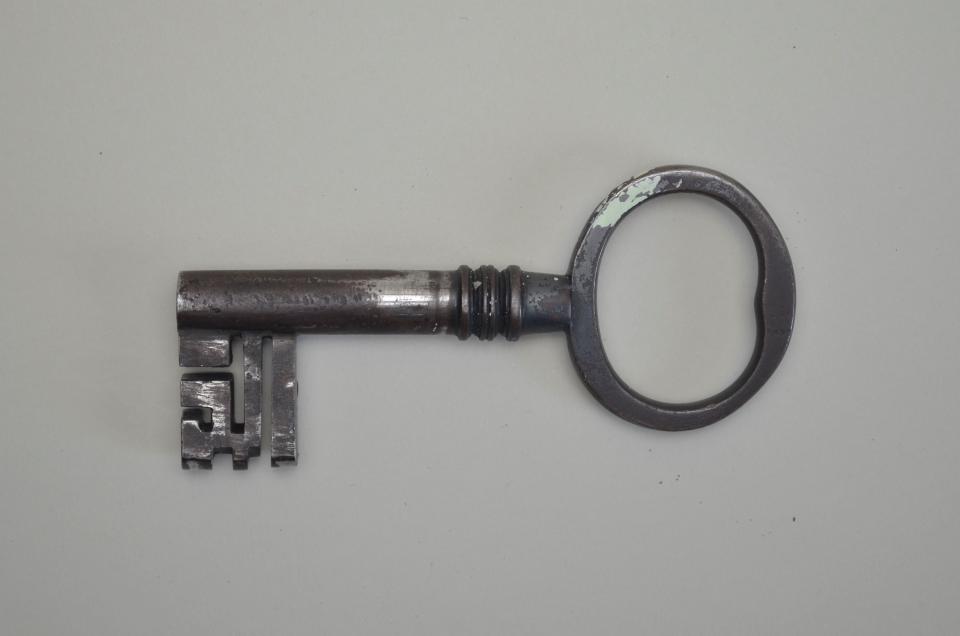
L: 12.7cm W: 6.3 cm H: 1.4cm
A large metal bit door key, with large round bow, round hollow shank decorated with a triple ring pattern at the bow end. The bit is rectangular with 4 wards. There is a stamp on the bow that reads "14".
Evidence of keys can date back to ancient Egypt, Babylon, and Persia with the earliest models being made of wood. Wooden keys and locks had various disadvantages including being bulky and heavy. This design was later improved in Ancient Rome when wooden keys and locks were replaced with iron and bronze which made the locks stronger and smaller and the keys lighter and more portable. The Romans also introduced the popular “skeleton key” design that continued to be used even into the 1940’s. This design was later replaced with the modern “flat keys” in the 19th century that were easier to manufacture and replicate.
During the major renovation and restoration of Kingston City Hall in 1973 a number of interesting objects from the 1800s and early 1900s were discovered hidden in walls and floors of the building. This key was one of those items.
